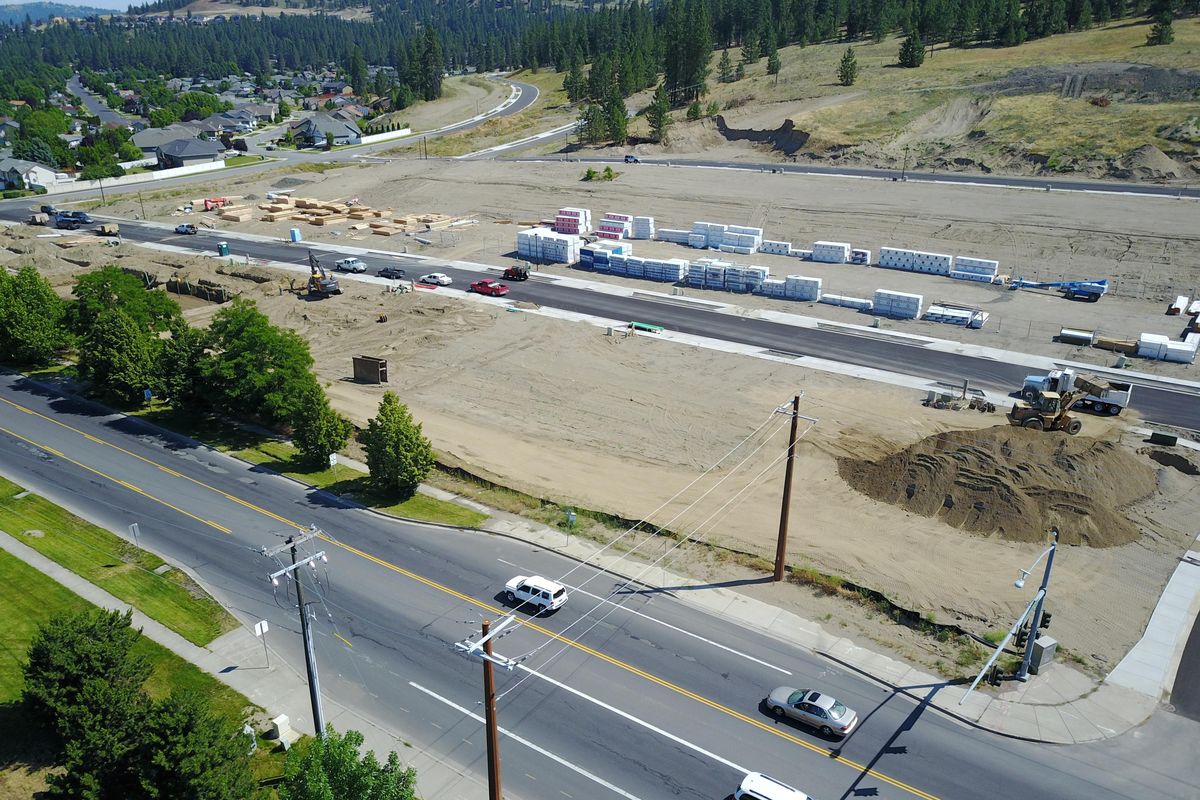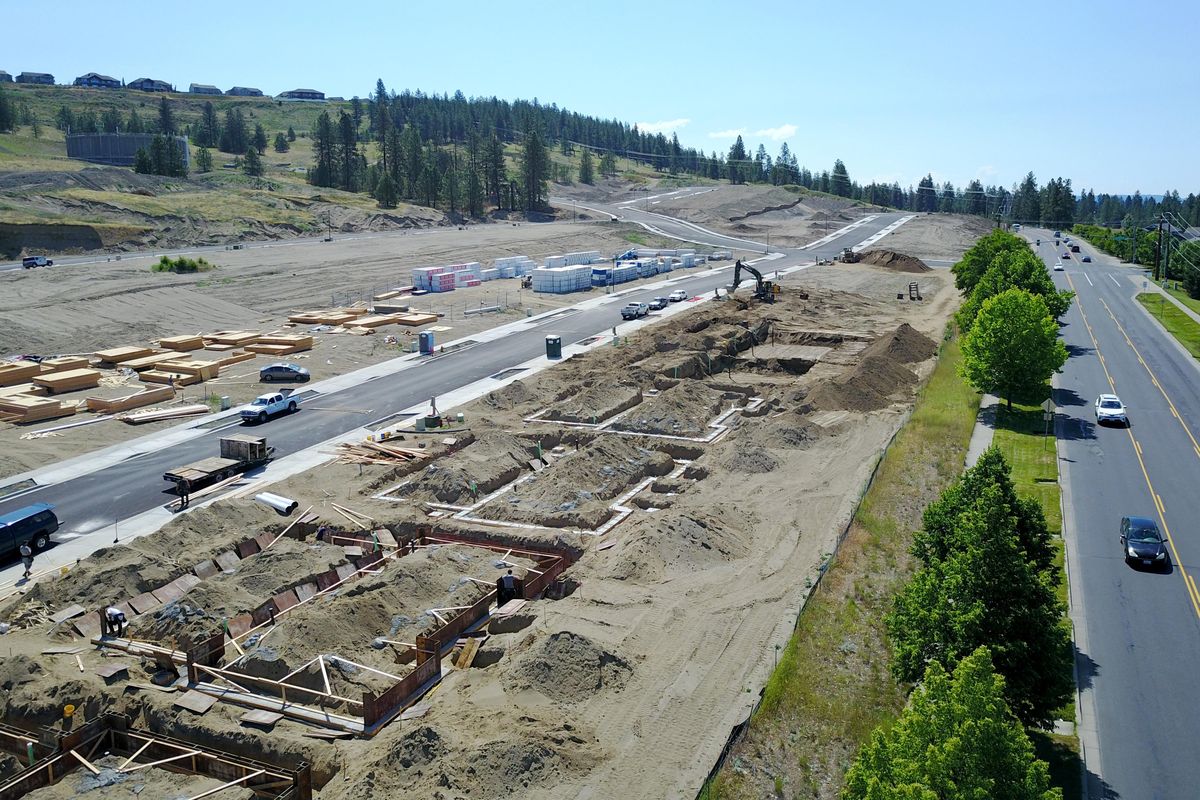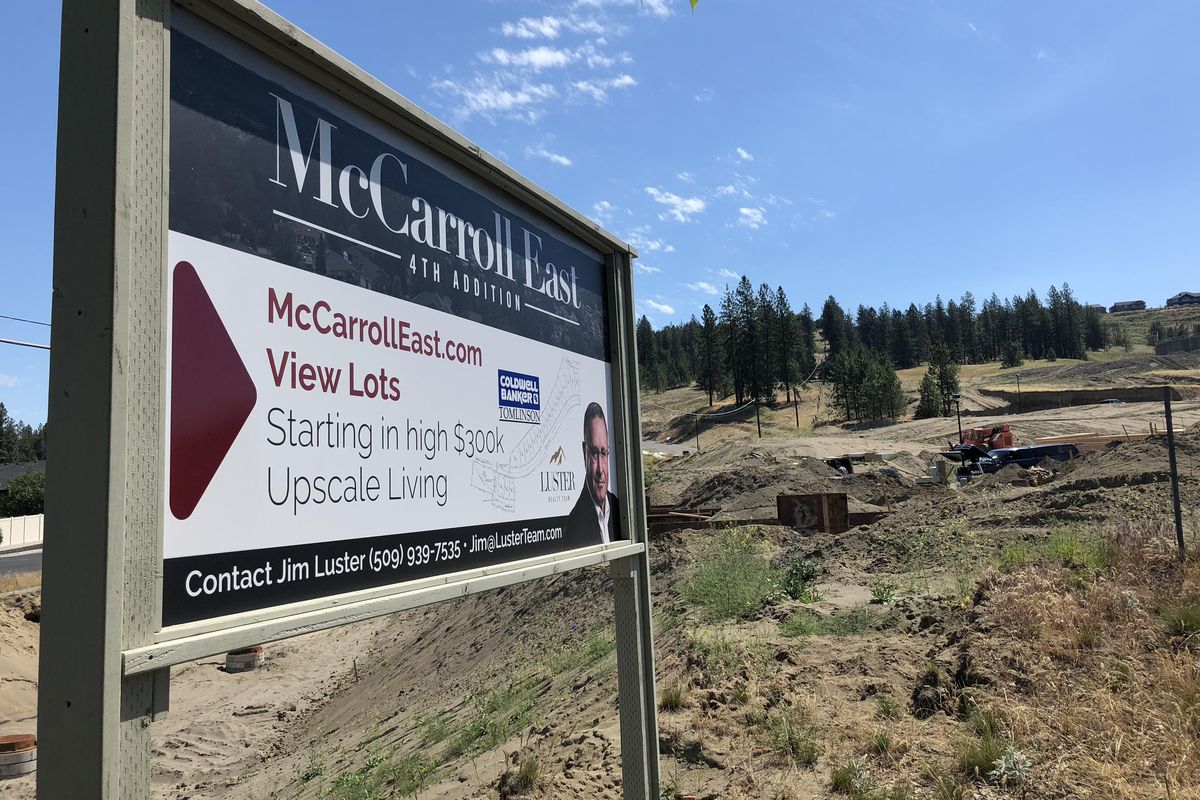New development – and more traffic – coming to Indian Trail neighborhood
New homes begin to take shape on the east side of Indian Trail Road, at right, at the intersection of Strong Road, Wednesday, June 20, 2018. McCarroll East, the fourth addition to the large subdivision already there, has begin construction on 21 luxury homes. (Jesse Tinsley / The Spokesman-Review)Buy a print of this photo
There aren’t a lot of ways in and out of Spokane’s Indian Trail neighborhood.
The main route of Indian Trail Road gets backed up during the morning rush, at times stretching for a half-mile. After all, people have to get to work.
Soon, a lot more people will be getting in line.
A development in the neighborhood that caused heartburn among elected officials and neighbors more than two years ago was issued building permits last week.
The first phase of the McCarroll East project, which straddles Strong Road on the east side of Indian Trail Road, will bring 20 duplex structures valued at more than $400,000 each. The 40 residential units in this phase will be nearly 1,500 square feet each, according to documents filed with the city, with a garage and an unfinished basement. Advertising for the development’s lots describe them as “upscale living” with pricing “starting in high $300k.”
In all, the project calls for 363 units, a mix of duplexes, cottages, townhomes and single-family houses. Dennis Crapo, who is leading the project under his Diamond Rock Construction, did not return calls seeking comment for this article.
But Terry Deno, chair of the neighborhood council, said the project is going “full steam ahead.”
Deno supports the project now, but he was on the leading edge of critics in 2016, when two big Indian Trail developments were making their way through City Hall. At the time, Deno said the proposals were out of character for the “suburban neighborhood.”
“Even if Indian Trail was a four-lane road like Francis (Avenue), we would still oppose this,” Deno said in 2016. “It’s just too high of a concentration. These projects are in the wrong location.”
Call it bad timing. Crapo’s plans for new housing in the neighborhood came at about the same time that developer Harley Douglass proposed a massive development less than a mile away.
Douglass’ plans called for an apartment complex that included 750 apartments on a 50-acre plot northwest of the shopping mall that includes Albertsons and Rite-Aid. The city’s plan commission advised against approving Douglass’ project, which required the land be rezoned to allow for more units to be built on the land, a recommendation the City Council heeded. Douglass appealed the decision but dropped that appeal early this year.
In 2015, Crapo sought a change in land-use laws that would have allowed him to build up to 400 duplex units on McCarroll East’s 26 acres. Neighbors were outraged, voicing concerns about traffic in the fast-growing neighborhood, which has few major roads.
Crapo’s plan fared better than Douglass’. In 2016, following the blowback, he pulled his application for the rule change. At the time, Dwight Hume, a land use consultant representing Crapo, said a city employee “called us back and showed us ways we can do what we want to do without seeking the amendment.”
The current zoning rules were approved in 1994, when Crapo got the green light to build 257 single-family units, 30 duplex units and 11 large or undivided parcels on the plat. Part of that agreement stipulated that a traffic study would have to be done when 140 single-family units were built.
Now, having found a way to build the development without seeking City Hall’s permission, Crapo intends to build 363 units on his land.
Deno, the once-critical neighborhood chair, said this week that the neighborhood council “didn’t have any problem” with Crapo’s development.
“We’re all happy with Dennis Crapo,” he said. “He came to our meeting and explained the plans. We’re just waiting to see what he’s doing.”
One thing his development will do is increase traffic, but Deno said the city has been working to smooth over such problems.
Last fall, the city extended Barnes Road up an 8 percent grade to Five Mile Prairie in an attempt to alleviate traffic. It hasn’t dented traffic much, Deno said, but the neighborhood might still be discovering it.
“Barnes Road, we love it,” he said. “Barnes Road is terrific.”
More helpful, Deno said, will be the widening of Indian Trail Road, which sees on average about 17,000 vehicles a day. The city has proposed adding a southbound lane as part of planned maintenance work on a stretch of the street beginning at Barnes Road and ending at Kathleen Avenue. The $1.3 million project is scheduled for 2019 and will keep the center turn lane, but an additional northbound lane is not yet on the books.
Deno looked forward to the road work, but suggested it wouldn’t do much good, considering its problematic intersection with Francis.
“That will get our working folks to Francis quicker,” Deno said. “We’re real limited. We could widen it all the way to four lanes all the way across, but you’re still going to run into Francis. There’s nothing we can do about Francis.”



